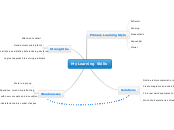por Kelley Chaves 12 anos atrás
417
Math252: Unit 4 - Probability
Probability involves understanding the likelihood of different outcomes in various scenarios. A key principle in this field is the Law of Large Numbers, which states that the experimental probability of an event will approximate a fixed number more closely as the number of trials increases.









